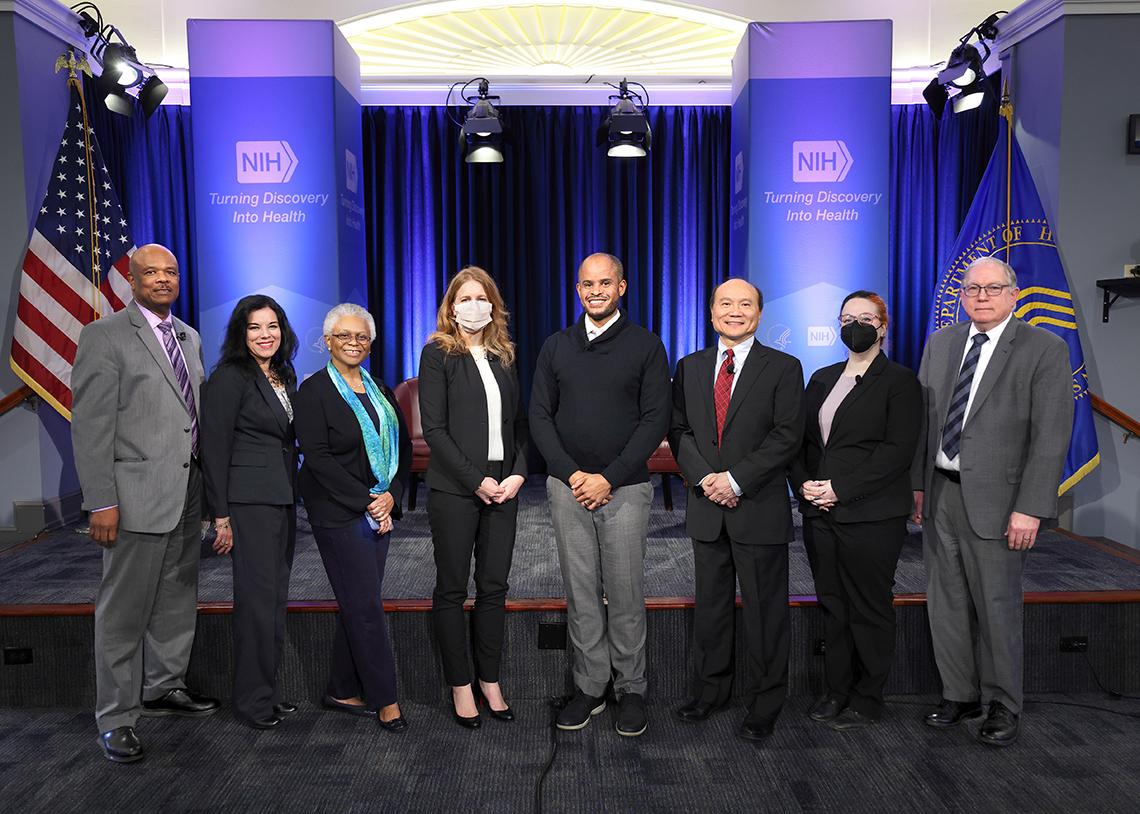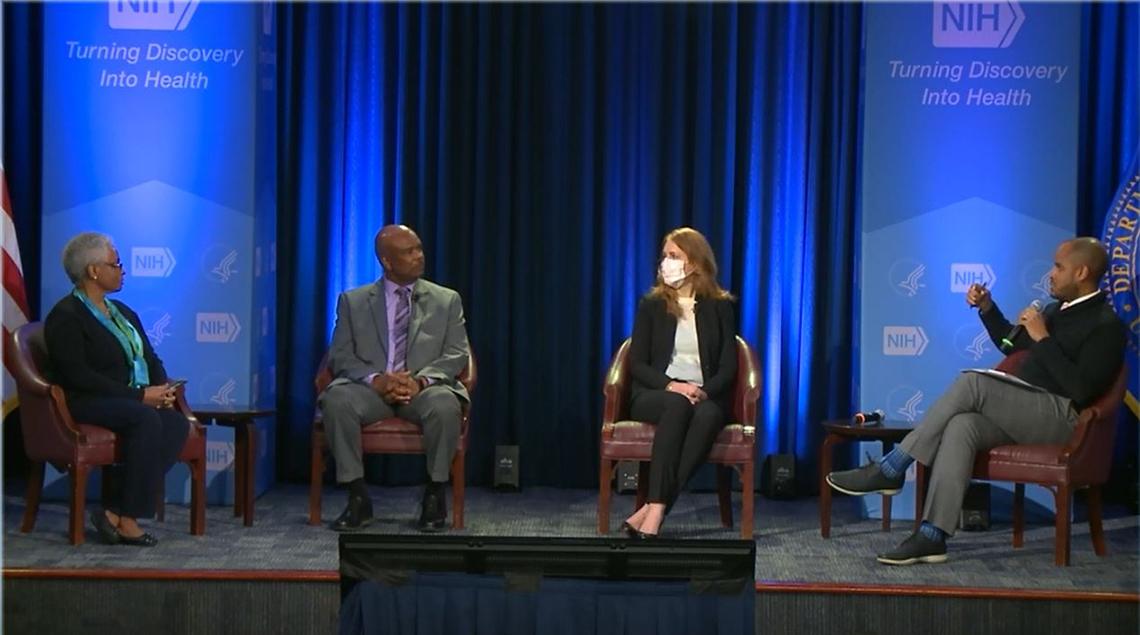UNITE Shares Insights from First Progress Report

Photo: Chia-Chi Charlie Chang
Diversity is more than a buzzword—it’s critical to NIH being able to achieve its mission, said Dr. Kenneth Gibbs during “Conversations on Racial and Ethnic Equity,” a virtual event about UNITE’s first progress report.
A workforce that includes people from a range of backgrounds and experiences is better positioned to address the health challenges of our increasingly diverse society, said Gibbs, event moderator and chief of NIGMS’s Undergraduate and Predoctoral Cross-Disciplinary Training Branch.
Released in October 2022, the UNITE Progress Report for Fiscal Years 2021–2022 describes NIH’s actions to identify and address structural racism that may exist within NIH and in the biomedical research enterprise. Dr. Lawrence Tabak, who is performing the duties of NIH director, described the report’s focus on:
- Elevating health disparities and minority health research across institutes and centers
- Promoting equity in the NIH-supported biomedical research ecosystem and in the internal workforce
- Improving the accuracy and transparency of racial and ethnic equity data
“There are real tangible things that are happening” thanks to the efforts of those working with UNITE, said Dr. Marie Bernard, NIH’s chief officer for scientific workforce diversity.
Accomplishments include revising the selection process for NIH Director’s Awards. This change will give more award opportunities to employees who aren’t in scientific positions.
At NIH, people of color make up the bulk of the workforce at lower GS levels. There have not been NIH-wide training opportunities for employees below GS-11. Recently, a new program launched to provide extra training opportunities to these employees.
The anti-racism steering committee recommended establishment of a listserv to advertise NIH jobs to a broader group of candidates. In addition, the Equity, Diversity and Inclusion Office has published demographic data about NIH’s workforce on UNITE’s intranet web page.
Bernard has read through each IC’s racial and ethnic equity plans. Many of them are hiring chief diversity officers whose full-time job will be focused on diversity, equity, inclusion and accessibility (DEIA) efforts.

“Every IC has really leaned into this effort,” she reported. “They thought carefully about their environment and what changes they need to make so things are more equitable.” Plans are underway to help them implement their proposals quicker.
UNITE committees include members from across NIH and at all seniority levels, said Asha Storm, scientific program analyst in NIBIB’s Division of Health Informatics Technologies.
“One of the great advantages of that is the fact that people talk to me in a way that they may not be willing to talk to a supervisor or their leadership,” Storm said. “It’s wonderful because members can then bring up issues with people who can enact change.”
NIH Deputy Director for Management Dr. Alfred Johnson has worked at NIH for 37 years as both a scientist and an administrator. “This is the first effort of this nature that I really feel is going to make a major difference at NIH and beyond,” he said. “That brings me great hope.”
UNITE’s five committees include more than 80 NIH staff volunteers. Each component has a unique mission, while working collaboratively to develop methods that enhance equity across the scientific enterprise.
This broad approach has allowed UNITE to “make tremendous progress in a short period of time,” Johnson observed.
To ensure accountability, UNITE volunteers knew they needed to develop an actionable plan to identify and track areas that need improvement, said Dr. Jake Liang, chief of NIDDK’s Liver Diseases Branch. He was part of the effort to formulate IC-specific racial and ethnic equity plans. Going forward, these plans might need to be modified depending on what happens in the future.
“Our DEIA journey was neither ‘once upon a time,’ nor will it be ‘happily ever after,’” he explained. “It requires constant and continued vigilance, so we don’t move backwards.”
Leadership has committed to furthering racial and ethnic equity by adding it into the critical elements of annual performance evaluations, said Brenda Robles, manager of the CC Social Work Department’s Language Interpreter Program.
“This demonstrates we have a commitment to diversity, equity, inclusion and accessibility, and that we’re all participating in this,” Robles said. “There is unity and strength in diversity and diversity of thinking and in racial diversity.”
Many diversity and inclusion efforts have come and gone with little to show. Much thought has gone into ensuring UNITE is “durable,” said Dr. Tara Schwetz, NIH acting principal deputy director. “We’re constantly thinking about how we can create programs and initiatives that are going to be sustainable and long-lasting.”
She said leadership has “baked the UNITE principles of antiracism and equity into the fabric of what we’re doing across NIH.” For example, the initiative is a working group of the NIH steering committee. “That means we have instituted UNITE as part of the NIH governance structure.”
Ten years from now, Bernard said, she anticipates that UNITE will be associated with a lot of good outcomes.
“It is my hope that we will have made significant progress toward our goals, that you will not be able to predict based upon race, ethnicity, your likelihood of getting NIH funding,” she concluded. “And similarly, you will not be able to predict, based on race and ethnicity, what GS level the person has…what leadership roles they may have within NIH.”
View the progress report at bit.ly/3kYMvUz.
